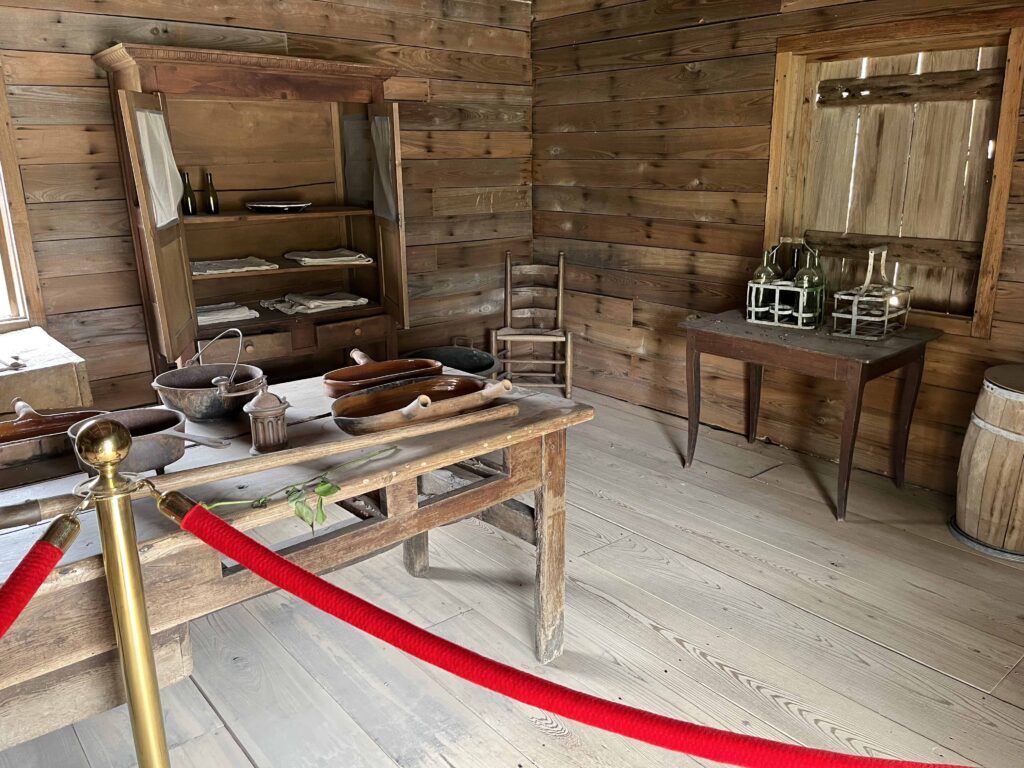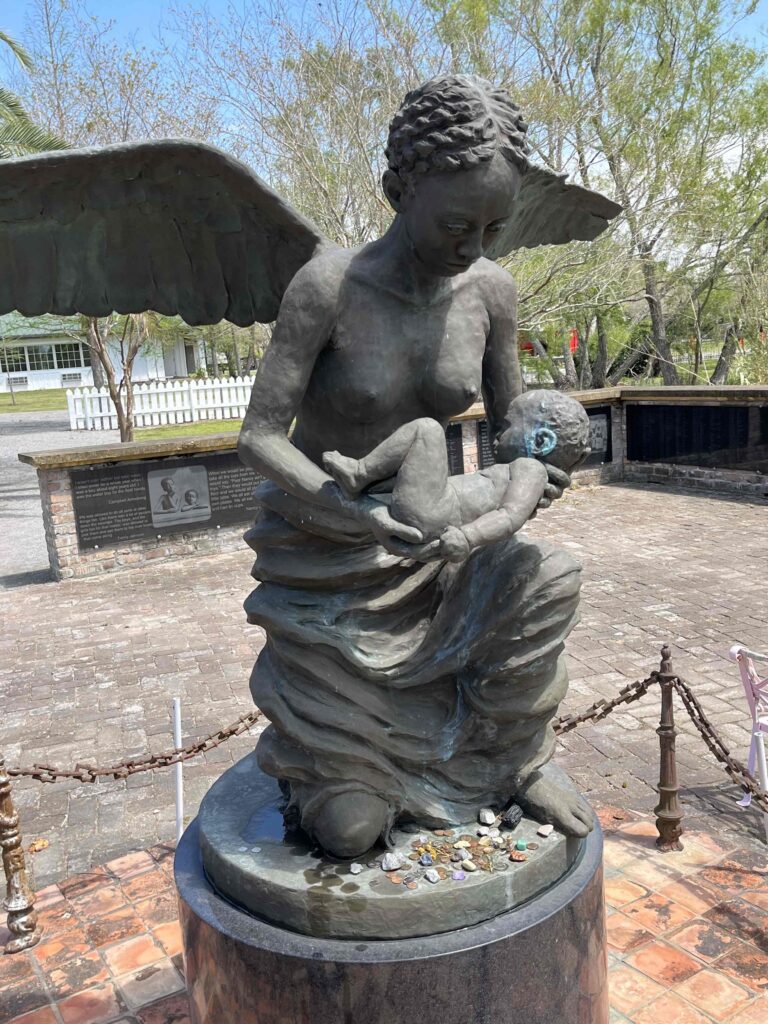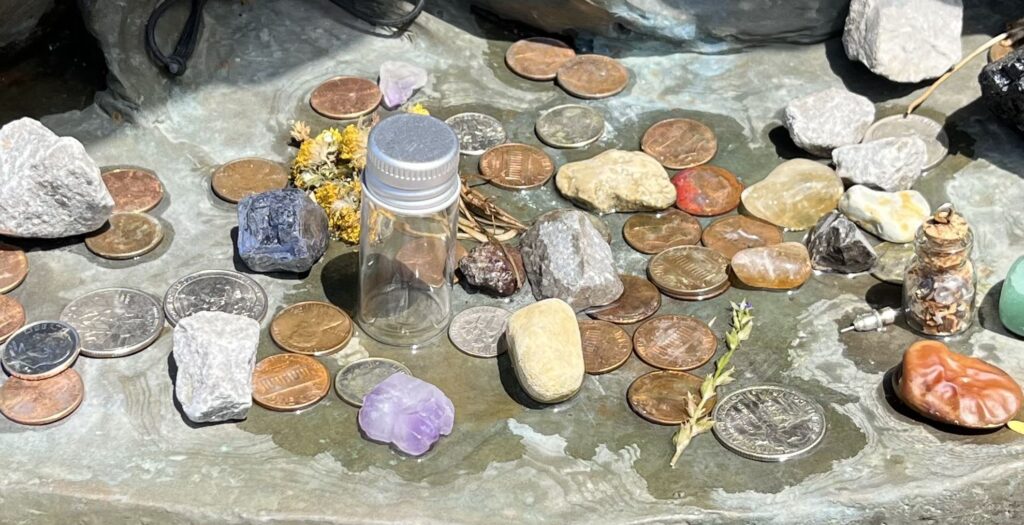
All over the plantation, there are artifacts and there is art.

Artifacts include whole buildings, some from this particular plantation, some preserved and brought from other areas; smaller items used in daily life; HUGE metal kettles used for boiling the cane to make sugar.

And there is art created by a number of modern artists, primarily in the form of sculpture. Some of it is haunting. Some of it is inspirational. Two pieces have become shrines.
By shrine, I mean they have become places where visitors, recognizing that the sculpture marks an especially profound moment or experience, even more so than the museum as a whole, leave mementos to express their lamentation, their respect, their recognition.
These two sites at this museum are the Field of Angels and the Memorial to the 1811 Slave Rebellion.
Leaving mementos at sacred sites is an ancient human impulse with roots wherever humans have existed. While humans are not the only creatures who make meaning from such rituals, we have elevated rituals such as these to art forms. Some are simple. Some are elaborate. Some are planned. Some are spontaneous. Some are made of quiet private moments, belonging to an individual or perhaps a family. Some are made of visible, public gestures, manifest by strangers drawn to the same place, drawn by the same impulse. I believe each act of leaving a memento to be an act of making or affirming the sacred – and that this capacity is available to all of us, as part of our inherent worth and dignity.

The first site was the art installation by Woodrow Nash, who created much of the art on the plantation: statues of small, Depression-era children that you can find throughout the grounds. At some point after the museum opened, he was commissioned to create representations to be used in the installation that commemorates the Slave Rebellion of 1811. This rebellion was led by Charles Deslondes, who is believed to have been brought to Louisiana from Haiti, and involved hundreds. You can read more about this Slave Rebellion in this article written by Mr. Leon A Waters, the man who led the tour I took of the (so-called) French Quarter a few days ago.
The memorial is a powerful, haunting, and disturbing installation because it does not shy away from the brutal history of the penalty that befell the enslaved people who rose up against their bondage. About thirty of those who rose up were killed in action. Historical documents show that forty-five were executed. In some cases, this meant beheading, with their heads then placed on stakes at the plantations from which they came, as a warning and threat to other enslaved people.

The second site was the statue at the center of the Field of Angels, a memorial dedicated to the over 2,200 enslaved children who died in St. John the Baptist Parish, beginning in 1820s, through the 1860s. The statue, created by Rod Moorehead, is called Coming Home. These deaths were documented by the Catholic Archdiocese, which kept such records, as Louisiana law required that all enslaved persons be baptized as Catholic. At the base of the sculpture, people have left their sign of respect in the form of beads, coins, and rocks.
And so, when I encountered these two sites made sacred, I wanted to join those who came before me and would come after me in expressing my respect, and even reverence, for the history that each site commemorated. I centered myself through silence, making sure to be present to the moment. I then poured some of the doubly-blessed homegrown holy water that I brought with me, leaving the small empty vial as an offering. I spoke a silent prayer.

And then it was time to move on.
